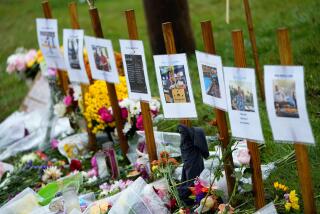We Aren’t Ready to Test Reserves’ Readiness--for Good Reason
- Share via
There is more than the obvious policy question behind the recent deployment of six U.S. minesweepers to the Persian Gulf: While the minesweepers are assigned to the Naval Reserve, the bulk of their crews have been replaced by active-duty sailors. This may seem insignificant--fewer than 200 men are involved--but it raises serious questions about the fundamental underpinnings of contemporary U.S. defense policy.
The end of the military draft in 1973 necessitated the concept of “total force” planning. Simply put, the military services were told to plan to use reservists, rather than draftees, should they need to expand their forces rapidly.
After some prolonged foot-dragging by the regular military Establishment, the reserves are now integrated with the active forces to an unprecedented extent, thanks largely to political and budgetary pressures. U.S. war planners have never before counted so heavily or so early on the reserves, who are just beginning to feel more like varsity players than second-stringers.
For its part, the Navy transferred to its reserve component a number of combat and support ships, including 18 of the 21 minesweepers in the fleet. These vessels continue to be manned largely by active-duty sailors, but roughly one-fourth of the ships’ companies consist of part-time reservists, many filling key positions.
Many skeptics oppose the expanded reliance on the nation’s reserve forces, contending that reservists cannot achieve sufficient levels of readiness in their limited available training time (about 40 days a year) and with the limited resources doled out by their parent services. Other critics, meanwhile, recall the divisive complaints by many “reluctant warriors” that were mobilized for the Korean War in 1950, the Berlin crisis in 1961, and in the aftermath of the Pueblo capture by North Korea and the Tet offensive in Vietnam in 1968.
Perhaps the greatest fear, however, is that reserve call-ups are viewed as unambiguous signals of escalation that complicate the political decision to use them. The doubting Thomases have history on their side: President Lyndon B. Johnson’s fateful choice to fight the Vietnam War with draftees rather than reservists--a stigma that the reserves continue to bear--was based almost totally on domestic political calculations.
To allay such concerns, reserve proponents in 1976 pushed through Congress a law authorizing the President to call, by executive order alone, up to 50,000 reservists for three months (since raised to 200,000 for up to six months). By no longer requiring the declaration of a national emergency or the approval of Congress, a limited call-up of the reserves was to appear more or less routine. In light of the minesweeper decision, however, it appears that while the President’s new discretionary authority now makes it easier for him in principle to call up the reserves, it has not made it any easier in practice.
The Navy has not divulged its reasons for leaving the reservists at the pier, but three possibilities come to mind: It did not consider the reserve crew members to be competent; it sought to minimize unpopular family and job separations, especially for such an ambiguous and seemingly open-ended operation, or the Administration wanted to avoid the escalatory signal that a reserve call-up would convey at a time when it was warding off pressures to comply with the War Powers Act.
Whatever the reasons--readiness, morale or politics--the spirit of the highly touted active-reserve partnership has been challenged. The Administration should not have stripped the minesweepers of their reserve crew members if for no other reason than to signal its clear commitment to the total-force concept. By failing to do so, it gave the regular military Establishment new cause to question the true availability of its reserve components, and it gave the reserve forces new cause to wonder if they really are the full partners proclaimed by the total-force policy.
The ramifications are particularly serious for the Army, the most heavily dependent of the services on its reserve components. Reservists now account for over 40% of the Army’s total combat personnel and 70% of all tactical support soldiers--the people who supply and maintain the combat units.
Under current assumptions, moreover, Army plans call for reserve units to deploy within days and National Guard combat units to reinforce Europe within weeks of a decision to mobilize. Reserve units also hold a prominent role in the so-called Rapid Deployment Force earmarked for fast-breaking contingencies worldwide.
It is a leap into the unknown to base the nation’s security so heavily on the expectation that reservists will be ready for such early deployments, that the purposes to be served will have clear popular support and that prompt political decisions would be made in unfolding crises.
If history--and especially the recent minesweeping deployment--is a guide, we should be devising a force structure based less on total-force rhetoric and more on military and political realities.


